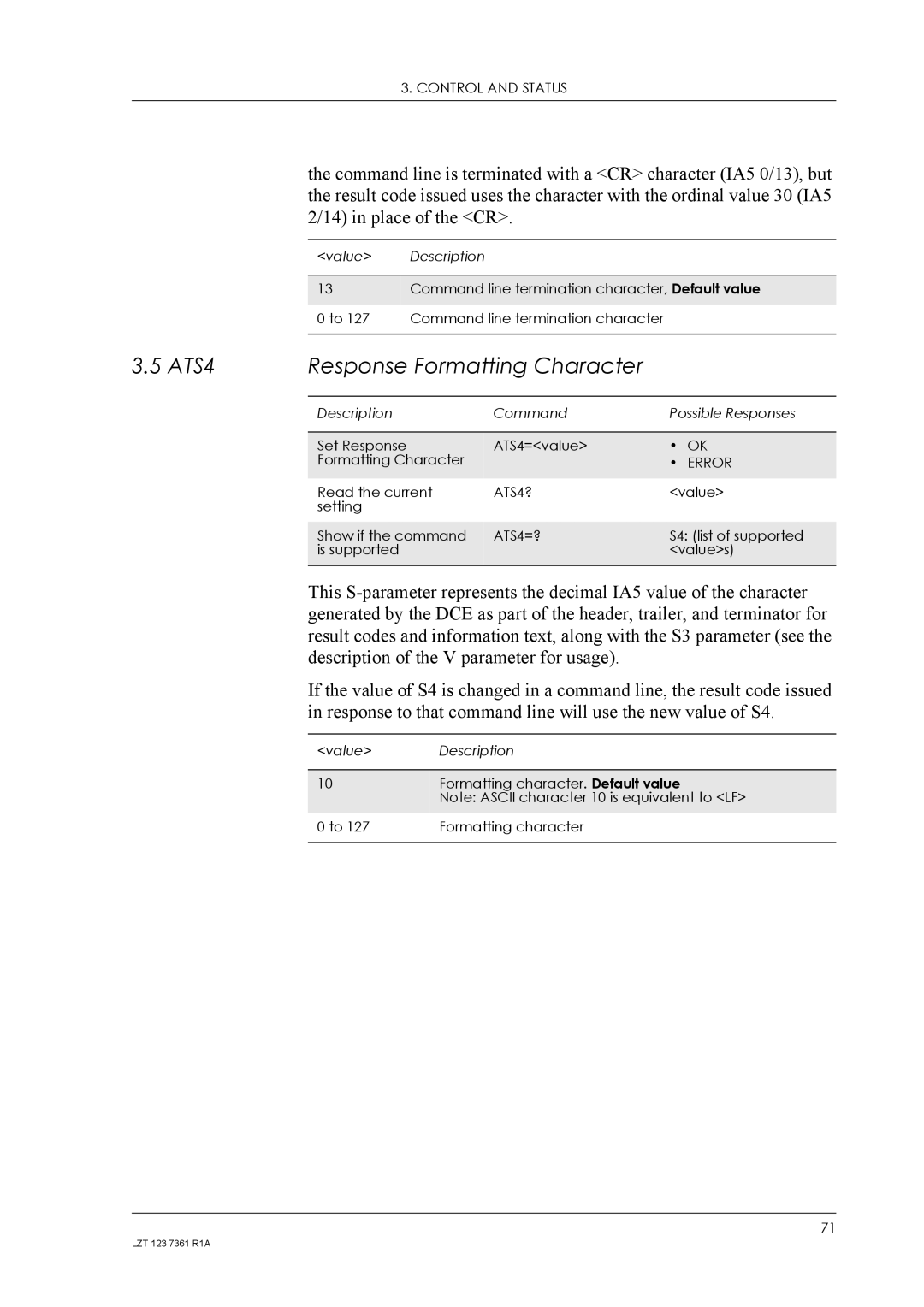
3. CONTROL AND STATUS
the command line is terminated with a <CR> character (IA5 0/13), but the result code issued uses the character with the ordinal value 30 (IA5 2/14) in place of the <CR>.
| <value> | Description |
|
|
|
|
|
| |||
| 13 | Command line termination character, Default value | |||
|
|
|
|
| |
| 0 to 127 | Command line termination character |
|
| |
|
|
|
| ||
3.5 ATS4 | Response Formatting Character |
|
| ||
|
|
|
|
| |
| Description |
| Command | Possible Responses | |
|
|
|
|
|
|
| Set Response |
| ATS4=<value> | • | OK |
| Formatting Character |
| • | ERROR | |
|
|
|
| ||
| Read the current | ATS4? | <value> | ||
| setting |
|
|
|
|
|
|
|
| ||
| Show if the command | ATS4=? | S4: (list of supported | ||
| is supported |
|
| <value>s) | |
|
|
|
|
|
|
This
If the value of S4 is changed in a command line, the result code issued in response to that command line will use the new value of S4.
<value> | Description |
|
|
10 | Formatting character. Default value |
| Note: ASCII character 10 is equivalent to <LF> |
0 to 127 | Formatting character |
|
|
71
LZT 123 7361 R1A
